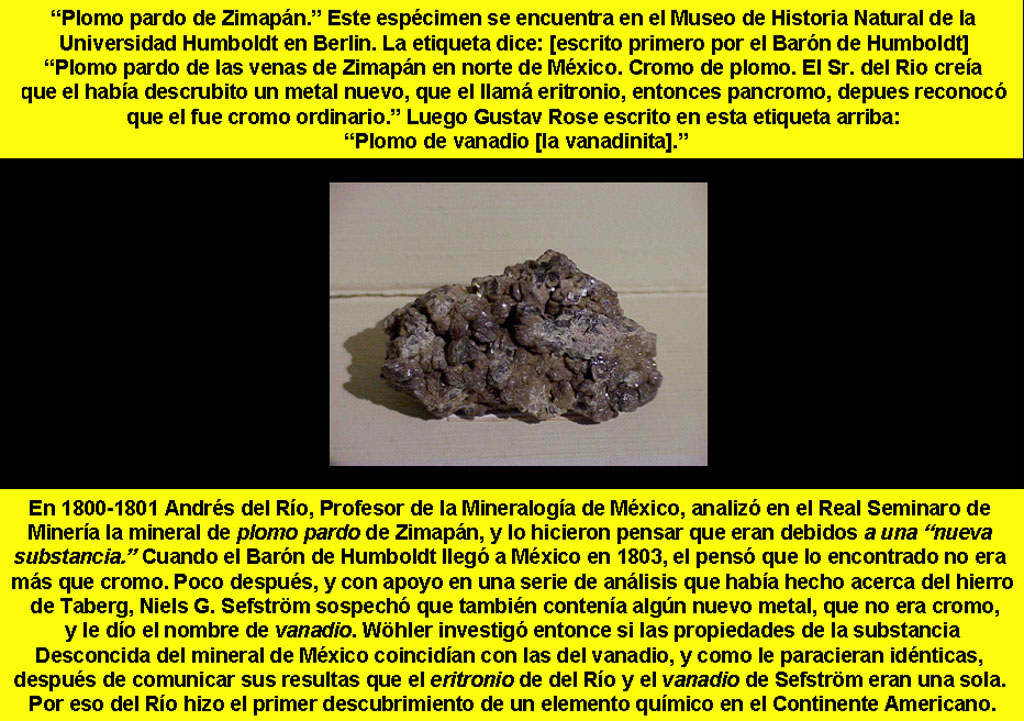Mexico/mexico170
Previous | Home | NextThis is a poster (prepared by the authors) presented to César Sánchez Lozano, who placed it in the lobby of his hotel. The label described in the upper text as residing in the Berlin Museum of Natural History is shown elsewhere in "Rediscovery" {LINK: Berlin100}. All text was originally composed and then translated from original English by the authors:
"Brown Lead of Zimapán." This specimen is in the Natural History Museum of Humboldt University in Berlin. The label says: [written first by Baron von Humboldt] "Brown lead from the veins of Zimapán in northern Mexico. Chrome lead. Mr. del Rio believed he had discovered a new metal, which he called erythronium, then panchromium, then acknowledged that it was ordinary chromium."Gustav Rose then wrote at the top of the label: "Lead of vanadium" [vanadinite].
In 1800-1801 Andrés del Río, Professor of Mineralogy of Mexico, analyzed in the Royal School of Mining the mineral plomo pardo de Zimapán [brown lead of Zimapan] and believed he had found a new substance [element]. When looked at Real seminarians from the lead ore mining Zimapan brown, and they did think that was due to a "new substance." When Baron Humboldt was Mexico in 1803, he thought it was only chromium. Soon after, with the support of a series of analysis made on the Taberg iron, Niels G. Sefström suspected it contained a new metal that was not chromium and he gave it the name of vanadium. Wöhler investigated the properties of vanadium with those of the Mexican material and concluded that del Río's erythronium was actually vanadium. Thus del Río is credited with the discovery and vanadium was the first element discovery on the American continent.
